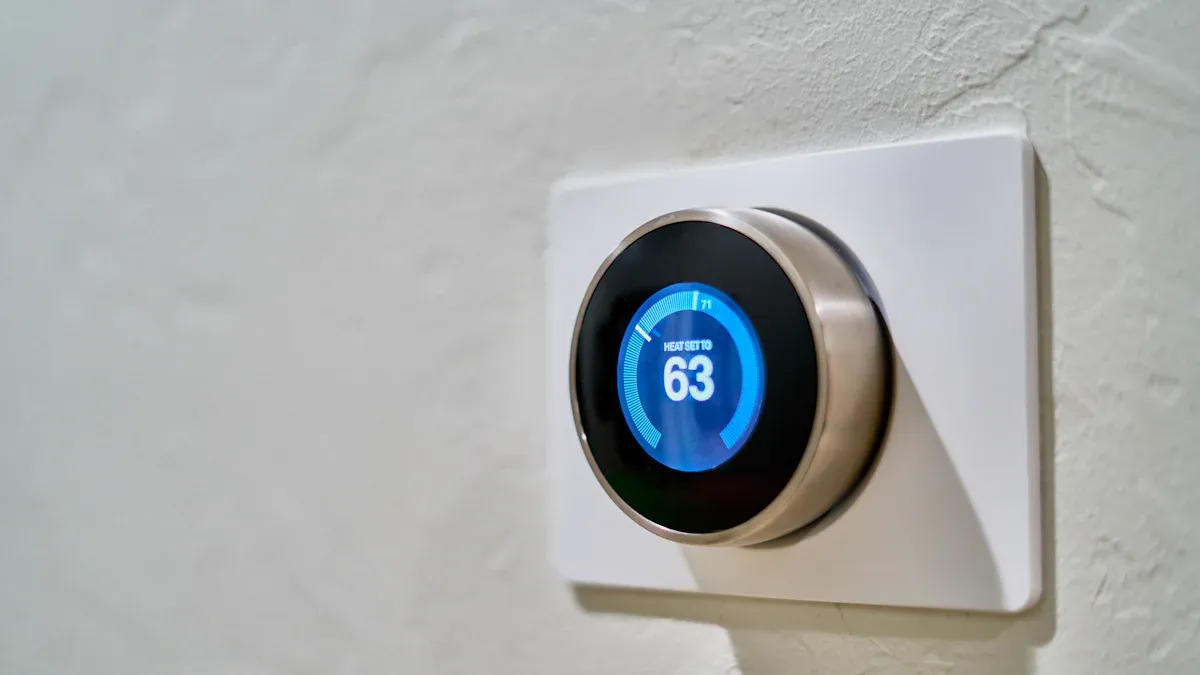
AI assistants in 2025 have reshaped how you interact with technology. These tools are faster and smarter than ever, with features that adapt to your needs. Over half of mobile users in the US now rely on voice assistants daily, while businesses report up to 40% efficiency gains. By leveraging cutting-edge AI trends, virtual assistants help you save time and focus on what matters most.
Key Takeaways
-
AI helpers in 2025 give super-customized suggestions based on what you like. This makes shopping and watching shows better for you.
-
Smart communication lets AI helpers use text, voice, pictures, and videos together. This makes talking to them easier and more fun.
-
They can understand how you feel and react right away. This builds trust and makes users happier.
Revolutionary Features of AI Assistants in 2025

Hyper-Personalized Recommendations
AI assistants in 2025 redefine personalization by delivering hyper-targeted recommendations tailored to your unique preferences. These AI tools analyze your behavior, habits, and preferences to predict what you need before you even realize it. For instance, platforms like Amazon and Netflix use AI-driven recommendation engines to enhance your experience. Amazon generates 35% of its revenue by predicting products you’re likely to purchase, while Netflix directs 80% of viewer interactions through personalized content suggestions. This level of personalization transforms your daily interactions, whether you're shopping, streaming, or exploring new services.
The impact of hyper-personalized recommendations extends beyond convenience. AI-powered virtual assistants now adapt in real time, offering predictive personalization that anticipates your needs. For example, mobile and location-based personalization delivers timely offers, increasing foot traffic and sales. This trend ensures that every interaction feels relevant and engaging, boosting customer satisfaction and loyalty. Businesses also benefit from improved conversion rates and customer retention, making hyper-personalization a win-win for both users and companies.
|
Trend |
Impact on User Engagement |
|---|---|
|
Increases relevance of content, leading to higher engagement. |
|
|
Real-Time Engagement |
Adapts to user behavior, enhancing interaction rates. |
|
Predictive Personalization |
Anticipates user needs, improving satisfaction and loyalty. |
|
Personalized Shopping Journeys |
Transforms shopping experience, boosting conversion rates. |
Advanced Multimodal Communication
Advanced multimodal communication is another groundbreaking feature of AI assistants in 2025. These AI tools seamlessly integrate text, voice, images, and video to create a richer, more interactive experience. For example, customer service AI virtual assistants now combine speech recognition and image analysis to provide contextually relevant responses. This capability enhances customer experience by making interactions more intuitive and efficient.
In education, AI-powered platforms cater to diverse learning styles by using text, images, and audio. This approach improves engagement and understanding, making learning more accessible. Similarly, in industries like manufacturing and security, multimodal AI integrates data from cameras and sensors to optimize processes and identify threats. These advancements highlight the versatility of AI tools in transforming various sectors.
|
Feature |
Description |
|---|---|
|
Multimodal Live API |
Enables low-latency bidirectional voice and video interactions. |
|
Improved Agentic Capabilities |
Enhances multimodal understanding, coding, and complex instruction following. |
|
New Modalities |
Introduces built-in image generation and controllable text-to-speech capabilities. |
By leveraging these features, AI assistants ensure that your interactions are not only efficient but also engaging and personalized.
Real-Time Emotional Intelligence
Real-time emotional intelligence is a revolutionary advancement that allows AI assistants to understand and respond to your emotions. These AI tools analyze your tone, facial expressions, and text to gauge your emotional state. For example, AI agents like Tess and MYLO provide therapy and counseling services, rivaling human clinicians in effectiveness. Users report increased satisfaction when AI assistants disclose emotions, highlighting the importance of emotional intelligence in creating meaningful interactions.
This feature is particularly impactful in mental health care. AI enhances treatment outcome predictions, enabling better personalization and planning. A mental health chatbot, for instance, can provide judgment-free listening and soothing techniques, creating a supportive environment for users. One user shared, “I really struggle with opening up to real people, but this AI is surprisingly helpful. The more you interact, the better you feel.”
|
Performance Metric |
Traditional TTS |
Emotional TTS |
Improvement Percentage |
|---|---|---|---|
|
User Comprehension |
Baseline |
Increased by 35% |
35% |
|
Engagement |
Baseline |
Increased by 50% |
50% |
|
User Satisfaction |
Baseline (3.5/5) |
4.2/5 |
20% |
Real-time emotional intelligence not only enhances your interactions with AI assistants but also fosters trust and empathy, making these tools indispensable in both personal and professional settings.
How AI Assistants Are Transforming Daily Life

Seamless Smart Home Integration
AI tools have revolutionized the way you interact with your home. In 2025, smart home assistants offer seamless integration with Internet of Things (IoT) devices, creating a unified control system for lighting, security, appliances, and more. These assistants learn your preferences over time, enabling personalized automation that enhances convenience and energy efficiency. For example, your assistant can adjust the thermostat based on your daily routine or dim the lights when you start a movie.
Market research highlights the growing adoption of smart home assistants. In 2024, they captured over 30.7% of the Voice AI in Smart Homes market. This growth reflects consumer demand for enhanced security, energy savings, and ease of use. AI-powered assistants also support interoperability across platforms, ensuring that devices from different manufacturers work together seamlessly. Edge computing further improves reliability by reducing latency and enabling real-time decision-making.
The measurable impact of these features is significant. Smart home management now boasts a 95% instant query resolution rate, improving operational efficiency. Continuous monitoring ensures quality assurance through accuracy checks and user satisfaction surveys. These advancements make your home smarter, safer, and more responsive to your needs.
Enhanced Productivity Tools
AI assistants are transforming how you work by offering advanced productivity tools that streamline tasks and improve efficiency. These tools automate repetitive processes, provide data-driven insights, and enhance collaboration. For instance, AI-powered platforms like GitHub Copilot assist developers by completing coding tasks 55% faster, while Gong AI delivers actionable insights to optimize sales strategies.
Businesses have documented impressive results. Accenture reported an 80% adoption rate of AI tools among pilot users, leading to significant productivity gains without increasing headcount. Developers using GitHub Copilot save $700 per month, while 97% find the tool useful for boosting confidence and job satisfaction. These metrics underscore the transformative potential of AI in the workplace.
AI assistants also support remote work by facilitating communication and decision-making. They integrate seamlessly with virtual meeting platforms, ensuring that teams stay connected and productive. By leveraging these tools, you can focus on high-value tasks while your assistant handles the rest.
Health and Wellness Monitoring
AI personal assistants are reshaping health and wellness monitoring by offering innovative solutions for proactive care. These tools analyze multimodal data to provide personalized health insights, helping you stay on top of your well-being. For example, AI-powered symptom checkers like Ada and Buoy Health use machine learning to assess symptoms and recommend next steps, potentially leading to early detection of health issues.
Clinical studies validate the impact of AI in healthcare. Predictive analytics help providers identify high-risk patients and reduce adverse events. Remote patient monitoring powered by AI has reduced hospital readmission rates by 45% in chronic disease populations. Additionally, 70% of patients express willingness to use smart healthcare solutions, reflecting growing trust in these technologies.
AI assistants also improve medication adherence through wearables and chatbots. These tools send personalized reminders and identify risks of non-adherence, ensuring better health outcomes. With 93% of patients reporting that physicians seem more personable due to AI integration, these assistants enhance both the quality of care and the overall patient experience.
AI assistants in 2025 redefine how you interact with technology. From hyper-personalized recommendations to real-time emotional intelligence, these tools enhance your daily experience. They streamline workflows, boost productivity, and improve engagement across industries like marketing and healthcare. By adopting AI tools tailored to your lifestyle, you can unlock their full potential. Staying informed about AI assistant trends ensures you maximize these benefits and remain ahead in a rapidly evolving digital world.
FAQ
What makes AI assistants in 2025 different from earlier versions?
AI assistants in 2025 are faster, smarter, and more intuitive. They offer hyper-personalization, real-time emotional intelligence, and seamless integration with smart devices, transforming your daily interactions.
How do AI assistant trends impact businesses?
AI assistant trends improve efficiency and customer engagement. Businesses benefit from predictive personalization, advanced communication tools, and automation, which enhance productivity and drive higher conversion rates.
Can AI assistants help with mental health?
Yes, AI assistants analyze emotions in real time. They provide support through therapy chatbots, emotional intelligence tools, and personalized wellness recommendations, making mental health care more accessible.








